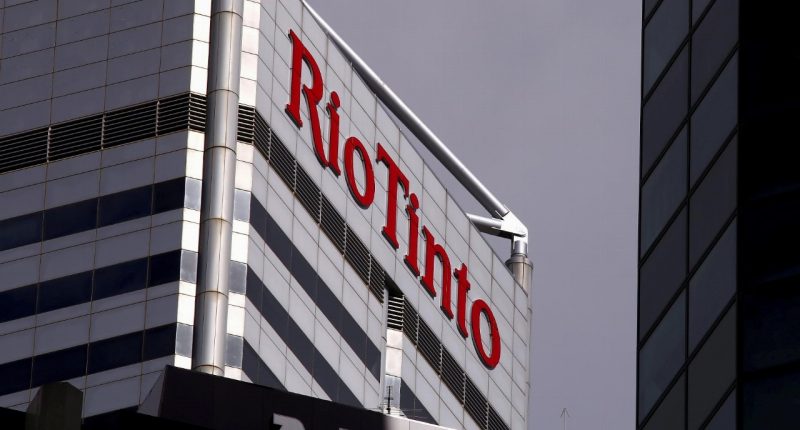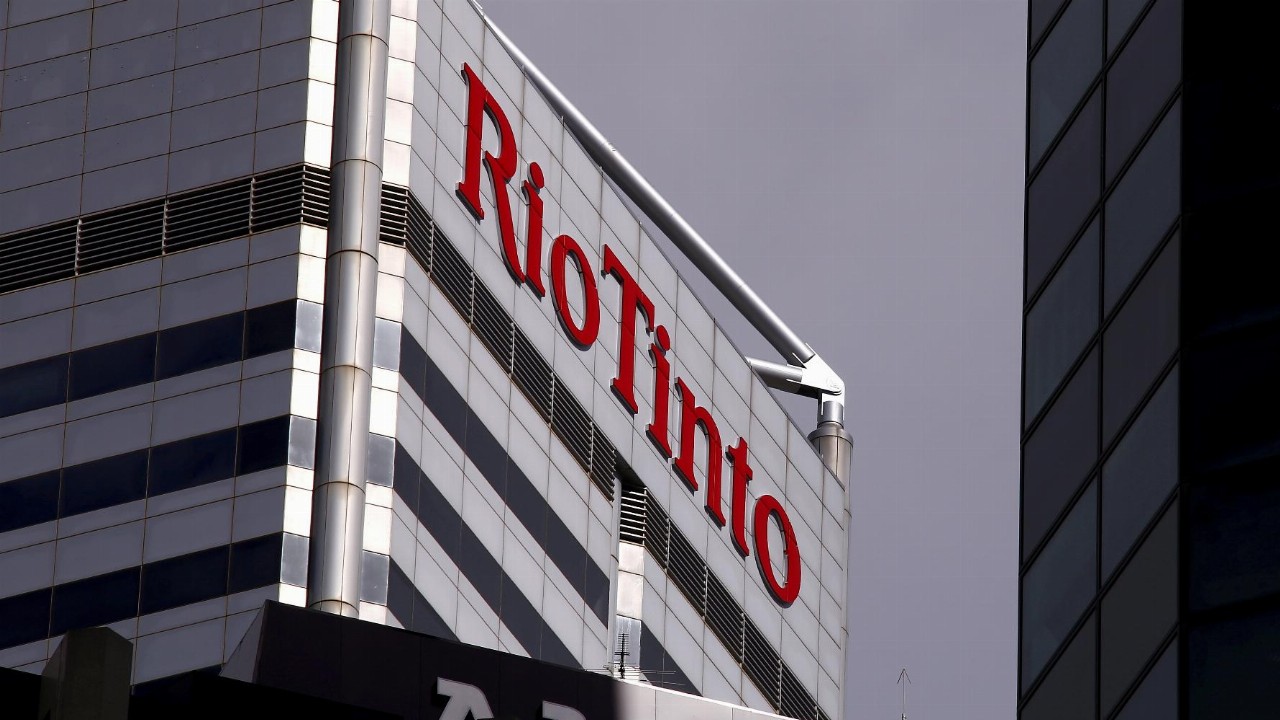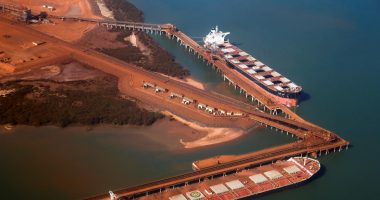- Rio Tinto (RIO) cuts expected iron ore shipments for 2021 as Western Australia’s constricted labour force delays the completion of two new projects
- The company now anticipates shipments of between 320 and 325 million tonnes, compared to a previous estimate of 325 to 340 million tonnes
- Still, Rio managed to ship 83.4 million tonnes of iron ore in the three months ending September 30 — two per cent higher than last year
- Iron ore prices have almost halved since a peak in mid-May, due partly to China’s cuts to steel output and a rapid slowdown in property activity
- Shares in Rio Tinto are down 1.32 per cent to $99.18 at 2:44 pm AEDT
Rio Tinto (RIO) has cut its expected iron ore shipments for 2021 as Western Australia’s constricted labour force delays the completion of two new projects.
The mining giant now anticipates shipments of between 320 and 325 million tonnes, compared to a previous estimate of 325 to 340 million tonnes. Such a downgrade threatens Rio’s position as the world’s biggest iron ore producer, with Brazilian rival Vale SA on track to hit the upper end of its guidance — between 315 and 335 million tonnes — this year.
“It has been another difficult quarter operationally and despite improving versus the prior quarter (and) we recognise the opportunity to raise our performance,” CEO Jakob Stausholm said.
“We have consequently modestly adjusted our guidance.”
Rio noted that a tight global supply chain had added to its difficulties, while headwinds from China’s regulatory scrutiny could ignite further volatility.
Prices for iron ore have almost halved since hitting a peak in mid-May, due in part to China’s cuts to steel output and a rapid slowdown in the country’s property activity.
But despite the hurdles, Rio managed to ship 83.4 million tonnes of iron ore in the three months ending September 30 — two per cent higher than the 82.1 million tonnes shipped in the same period last year.
While shipments were up, Pilbara iron ore production was four per cent lower, due to heritage management issues and labour shortages that caused delays to the completion of Rio’s new greenfield mine at Gudai-Darri and the Robe Valley brownfield mine replacement project.
“The tight labour market in Western Australia continues to limit our access to labour and we have also experienced delays due to a tight global supply chain,” Rio said in a statement.
The company has also delayed first production for the Oyu Tolgoi copper mine in Mongolia by three months to January 2023. On Thursday, Rio’s joint venture partner Turquoise Hill Resources estimated additional funding required for the project had ballooned to US$3.6 billion (A$4.85 billion).
“Project progress continues to be significantly affected by COVID-19 constraints in Mongolia,” Rio said.
“Site accommodation and manning levels improved in the quarter but were between 25 per cent and 50 per cent of planned requirements in order to comply with COVID-19 restrictions.”
Rio estimates the impact of additional restrictions related to COVID-19 on overall project costs to be around US$140 million (A$188.68 million), as of September 30.
Shares in Rio Tinto are down 1.32 per cent to $99.18 at 2:44 pm AEDT.








